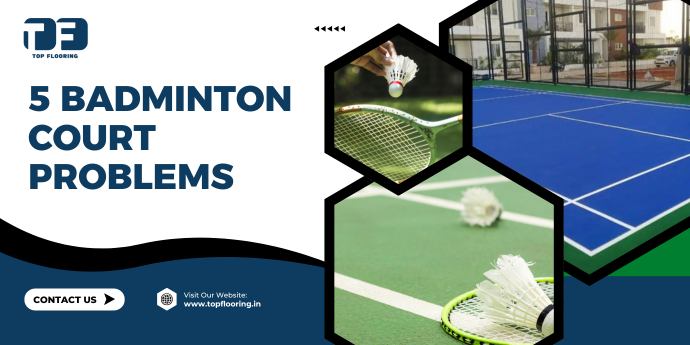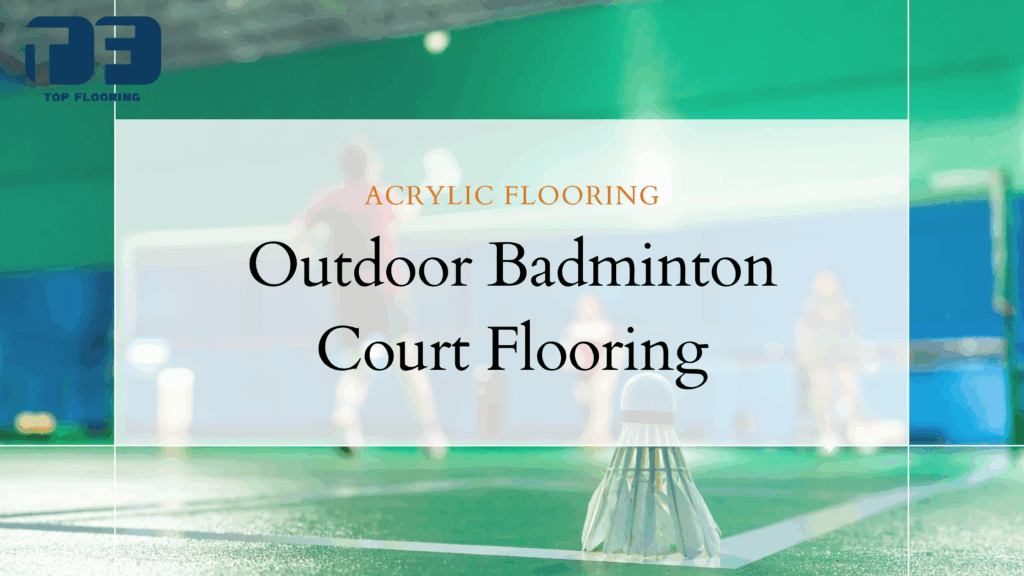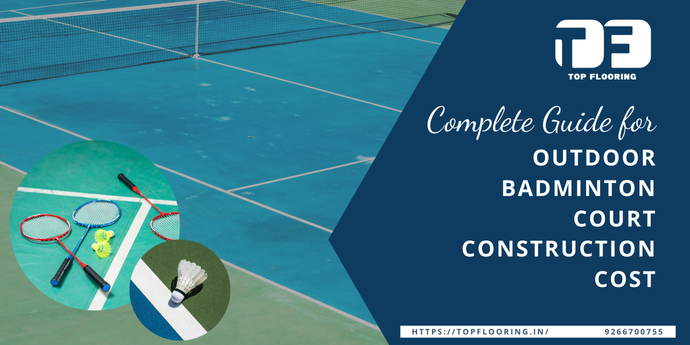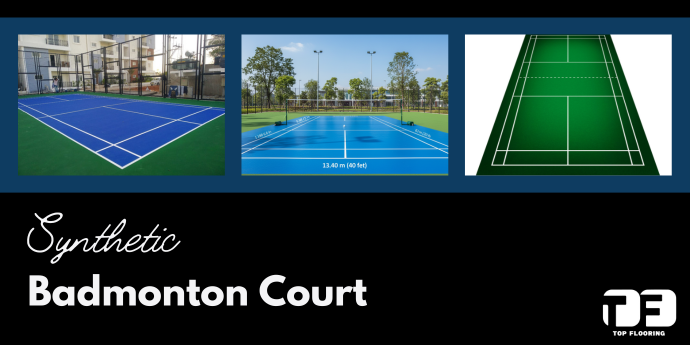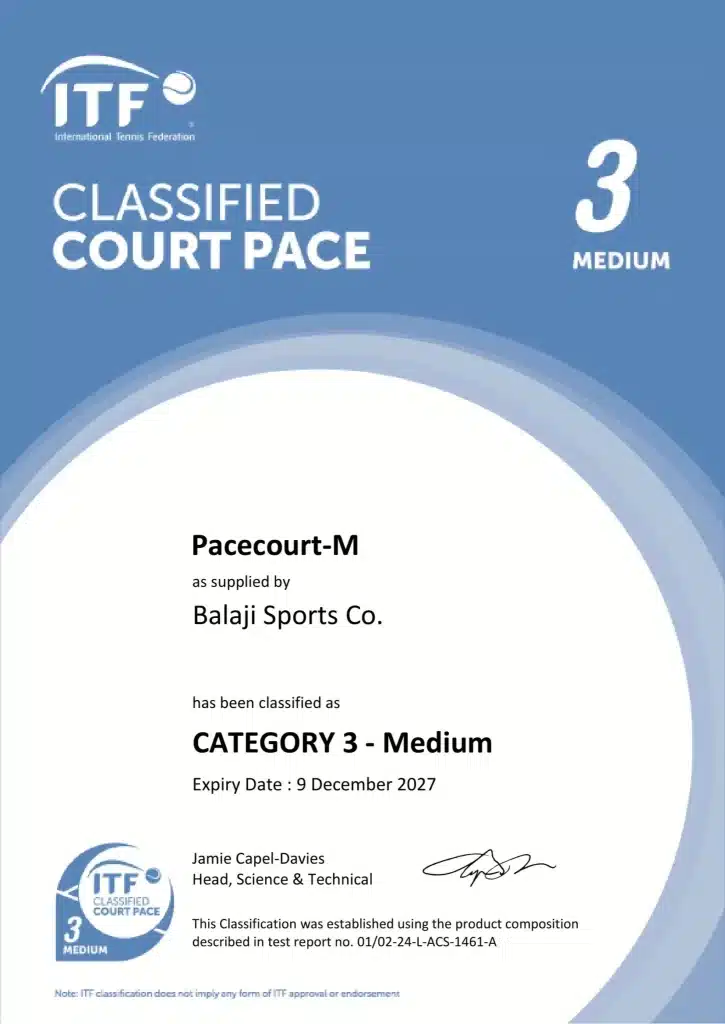Badminton is a fast-paced sport. It relies on speed, quick reactions, and powerful sudden movements. Players leap, twist, and dart all over the court, depending on the badminton court flooring to hold their weight and give a steady grip and bounce. People focus on the excitement of the sport, not the sports court, unless there’s a problem. Still, the type of badminton court surface affects how safe players are, how well they perform, and how long the badminton court can last over time.
Keeping the badminton court surfaces often creates problems like uneven spots, cracks, slippery areas, or warped sections. Sometimes, exposure to moisture can ruin them. These kinds of issues mess up games and can lead to injuries or costly fixes. With India’s sports facilities growing, more people like school heads, facility managers, and even private court owners are focusing on court surfaces. To install a new badminton court or resurface an older badminton court, knowing the usual flooring problems and ways to avoid them becomes important.
This guide looks into five common badminton court flooring issues, such as cracks and separation, warping and cupping, buckling and delamination, slippery and dusty surfaces, and uneven bases. Based on insights from professionals and organizations like the Maple Flooring Manufacturers Association (MFMA), the article explores the causes of these issues, their effects on gameplay, and ways to prevent them. It aims to help court owners and players spot problems early and use effective solutions to keep their courts safe, durable, and fun to play on.
1 Cracks and separation in the Badminton Court
A common problem with wood sports floors is gaps showing up between the boards. In places like gyms or indoor badminton courts, this tends to happen with seasonal changes. During the heating months, when indoor air becomes dry, the wood shrinks and tiny cracks form. When the air gets more humid, the boards take in moisture, swell, and the floor looks snug again. This back-and-forth movement puts stress on glue and fasteners, leading to boards pulling apart, making creaking sounds, and creating uneven spots on the floor.
The MFMA recommends that sports facility managers keep humidity levels at 35 to 50 percent and air temperature between 55 and 75 degrees Fahrenheit, which is about 12 to 24 degrees Celsius. This helps limit how much timber expands or contracts with seasonal changes. Before sealing and finishing new courts, the wood should adjust to the building’s climate. Badminton court Installers also leave gaps along the edges of the court to allow for movement. If these gaps are not provided, the badminton court flooring might buckle due to shifts in humidity.
Cracks and gaps are not just problems with wood badminton court flooring. Synthetic badminton court materials like polyurethane and vinyl can form seams too if the subfloor shifts or the glue stops holding. This happens because the base moves or there is a sudden spike or drop in moisture levels. To stop gaps from forming:
- Keep the indoor environment steady. Use HVAC systems with humidity controls to manage temperature and moisture. Facility managers should track humidity to avoid changes greater than 15 percent. In places with high humidity, like India during monsoon seasons, using dehumidifiers or desiccant systems may be needed.
- Let materials adapt and plan space for expansion. Wooden boards need time to adjust to the temperature and humidity of the location before installation, which usually takes several days. You should leave small spaces around the edges of the court for expansion, and if required, add extra expansion rows in between. For synthetic badminton court flooring, pick adhesives that can handle the area’s humidity conditions.
- Check the floor often. Frequent checks can spot minor gaps, stopping them from becoming bigger issues. The MFMA suggests maintenance crews inspect sports floors every day to catch any signs of shrinking or tightening and to clear out debris from the expansion spaces.
- Fix the cause, not just the signs. If you notice cracks with creaking sounds or areas that feel uneven, check if the subfloor is sinking or if water is getting in from below. Solving this underlying problem helps keep the court sturdy over time.
2 Warping, cupping, and crowning
These issues happen when a floorboard’s top and bottom soak up water at different speeds. A “cupped” board has raised sides with a hollowed-out middle, while “crowning” means the center of the board swells upwards. Both problems can mess up the playing surface and let moisture get trapped under the finish.
Cupping occurs when moisture builds up beneath the board, which makes the edges rise. This often happens because of plumbing leaks or water slipping through during heavy wet mopping. Crowning, on the other hand, happens when someone sands a cupped floor before it dries. Sanding the raised edges flat can cause the wood’s center to stick out more once the moisture is gone. Both problems come from uneven moisture levels and may damage the structure if left untreated.
Warping doesn’t happen to wood badminton court flooring. Vinyl or PVC floors can form bubbles or ripples if the surface underneath gets damp or the adhesive loses grip. In India’s monsoon season, high groundwater and humid conditions make controlling moisture an essential task.
To prevent issues like warping, cupping, and crowning:
- Use an effective moisture barrier. Place vapor barriers under the subfloor if you have wooden sprung floors. On concrete floors, install a proper damp-proof membrane (DPM). Without this kind of barrier, moisture can rise and lead to cupping.
- Control how you clean the surface. Too much water often causes damage. The MFMA suggests using a dry mop or a treated dust mop and cleaning up spills immediately. Top Flooring recommends sweeping and mopping with a mild detergent on wood or PVC badminton court floors. Avoid soaking the floor or using high-pressure washing. If you must pressure wash outdoor synthetic courts, stick to low-pressure settings.
- Let the floor dry before sanding it. If a wooden badminton court has signs of cupping, you should wait for moisture levels to balance out before refinishing. The MFMA advises giving the wood time to settle to prevent crowning during repairs.
- Check for building leaks. Leaks from roofs, pipes, or poor drainage can lead to water damaging the floor structure. Inspect plumbing and gutters often. Consider adding French drains or creating proper slope grading outside to keep rainwater from reaching the court.
- Choose materials suited to the climate. In humid areas, opt for synthetic badminton court surfaces or treated wood badminton courts as they handle moisture changes better. Many Indian facilities use PVC badminton mats and cushioned acrylic badminton court surfaces because they are durable and need less upkeep.
Fixing moisture issues and sticking to good maintenance habits helps facility owners avoid warping and keeps surfaces even for a long time.
3 Buckling and Delamination on Badminton Surface
Buckling happens when floorboards lift a lot and form peaks and dips, leaving the surface bumpy and uneven. Sometimes, floors can even look like ocean waves after a flood. Delamination occurs when layers of synthetic badminton court flooring come apart or pull away from the base below. These issues make the court unusable and often mean costly fixes or complete replacement.
Flooding or natural disaster, where wood floors get soaked with water for too long, leads to buckling. The boards expand so much that they press against each other and lift in chunks. On the other hand, delamination in synthetic flooring can result from standing water sitting on for too long, matched adhesives prepped surfaces, or extreme heat exposure.
To avoid buckling and delamination, good design choices and planning for emergencies make a difference.
- Plan drainage carefully. When building new courts, make sure the ground is graded and drainage systems are added. The base should slope so water moves away from the surface. You can use French drains or soak pits to stop groundwater from seeping into indoor courts during heavy rains.
- Use good materials and skilled work. Pick adhesives and sealers that work well with your flooring type and handle the local weather. For synthetic layered flooring, allow each layer to set before adding the next. If the installation is rushed or done poorly, weak spots can form and lead to peeling under pressure.
- Act fast when water problems happen. When you deal with leaks, floods or big spills, get rid of standing water right away. Dry the place using fans and dehumidifiers. If water has seeped into a wooden sprung floor, reach out to experts. They might save the boards if you take action before they swell too much.
- Prepare ahead for bad weather. To handle flooding, think about raising the court or choosing synthetic outdoor floors designed to handle water. In rooms used for multiple purposes, store important items off the floor. Also, have a plan ready to remove or cover the playing surface if any leaks occur.
- Stick to regular checks and upkeep. Delamination does not occur all at once. Watch out for bubbles, soft patches, or places where the surface seems to lift. Acting, like fixing small loose sections, helps stop it from spreading and getting worse.
Even with careful upkeep, serious buckling means replacing part of the floor or even the whole system. Partnering with skilled pros like Top Flooring ensures accurate moisture checks, the right materials, and expert fixes, cutting down the chance of major damage.
4 Slippery or Dusty Sports Surfaces
Low traction on a surface creates immediate risks to safety. Slippery areas make it hard to move and can lead to injuries like sprains or falls. Dust, dirt, and spills all lower grip, and worn-out finishes can leave floors smooth and hard to stand on.
Dirt brought in on shoes or dust from older HVAC systems grinds down the surface like sandpaper. This buildup increases the chance of slips while damaging the coating and reducing friction. Top Flooring highlights the idea that regular cleaning is needed to keep bounce, grip, and shock absorption steady.
Steps to improve traction and avoid slipping include:
- Set up rules about shoes. Provide clean sneakers for players to use, and try to stop people from wearing outdoor shoes on indoor courts. Put mats by entrances to catch dirt and water before it gets inside.
- Stick to a cleaning routine. MFMA suggests sweeping or dry mopping every day, or even more often for busy courts. Top Flooring says sweeping daily before and after sessions clears up loose dirt. Mopping or monthly with mild soap helps clean stubborn grime. Skip household cleaners or strong scrubbers since they can damage the surface.
- Choose the right cleaning solutions. A mild pH-neutral detergent with water cleans most surfaces well. For tough stains or to clean shuttle marks left by badminton play, you might need resin removers or degreasers. Always follow the product instructions from the manufacturer. Outdoor badminton court flooring can be cleaned by using low-pressure washing to clear dirt and algae.
- Recoat when needed. Cleaning helps, but over time, UV exposure and wear can strip the top layer. Applying a fresh coat of sports lacquer or acrylic coating brings back traction and also makes the court look new. Inspections help know when to recoat before the surface gets too slippery.
- Manage indoor air quality. Modern sports venues rely on HVAC systems with proper filters to reduce dust in the air. Filters need cleaning or replacing , and ducts should be checked for leaks. Clean air creates a safer and healthier space for players.
Floors become slippery when cleaning isn’t thorough or when small leaks go unnoticed. Facility managers can avoid hazards by maintaining surfaces and using appropriate cleaning methods to keep players safe.
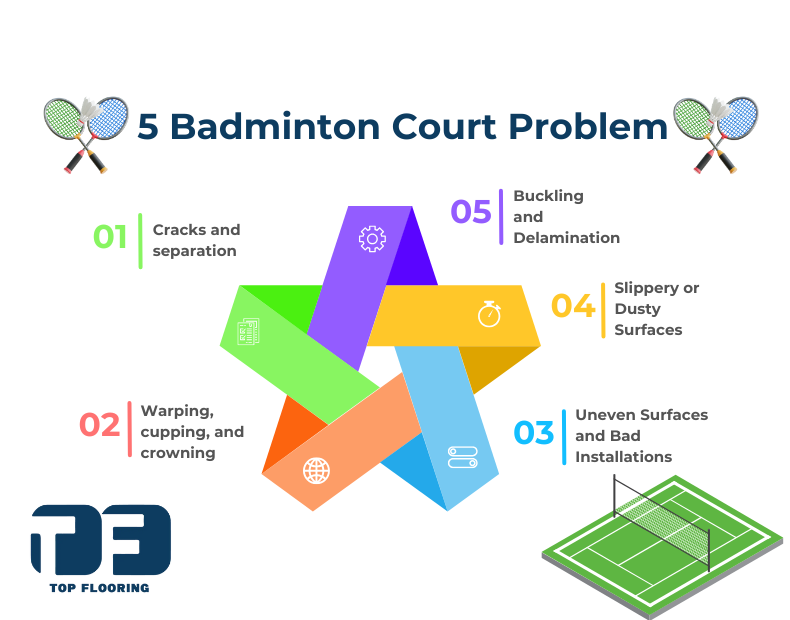
5 Uneven Badminton Court Surfaces and Bad Installations
A badminton court relies on the foundation it stands on. Badminton court flooring problems like uneven bounce, stress on joints, dead spots, and quick wear often stem from bad base construction or using the wrong materials. Many people think these are “flooring problems,” but the actual cause is found below the surface.
Getting the site ready matters a lot. To build outdoor courts, workers must clear, level, and pack the ground. A small slope of 1 to 1.5 percent helps water flow away and avoids puddles. Professionals always emphasize this step for outdoor acrylic courts. Systems like French drains are added to stop water from gathering underneath. Skipping grading and draining can cause standing water, leading to moisture issues in the base layers.
Indoor courts need a solid subfloor to function well. Many badminton halls rely on wooden sprung floors as they help soften impact. The Badminton World Federation suggests using this kind of flooring since it lowers strain on joints and gives a suitable surface for playing. But the substructure has to be built. Aligned or unstable supports can cause uneven bounce and areas where the floor feels unresponsive. A sturdy sub-construction keeps the floor from bending or twisting over time.
Synthetic badminton court flooring options like cushioned acrylic systems and PVC mats often work well in outdoor courts or multi-use spaces. These materials last a long time, stand up to weather, and need less upkeep compared to wood floors. For instance, PVC mats are tough and simple to clean. Cushioned acrylic surfaces help absorb impact and come in various color options so they fit well in places like community centers or schoolyards. But both types need a flat, even foundation under them, as any unevenness under the flooring will show on the surface.
To prevent badminton court flooring caused by uneven bases or poor installation:
- Hire skilled installers. Companies specializing in sports flooring know how to prep the area, construct the base, and lay down surface layers. They consider things like drainage, site conditions, and material expansion. Teams from Top Flooring, as an example, install courts with the right slope and base thickness, ensuring they last a long time.
- Choose durable materials. Skimping on adhesives or base materials often leads to uneven courts and quicker wear and tear. Use asphalt or structural concrete bases with suitable thickness (between 100 to 150 mm for concrete according to Top Flooring’s outdoor guide) and go for sports-grade systems, like wooden flooring or acrylic built for badminton.
- Add features for absorbing shock and gripping well. Good shock absorption helps protect the joints of players, while a better grip stops slipping. Wooden sprung floors give natural cushioning, and cushioned acrylic surfaces absorb impacts with their rubber layers. To make traction better, silica sand can be mixed into the acrylic coating.
- Think about the surroundings when choosing materials. Wood or PVC mats often work better inside, but outside surfaces need acrylic or weatherproof materials. Picking the wrong material for the climate can ruin the court. Untreated wood outside can warp, and indoor PVC mats used in hot outdoor areas might expand or buckle.
Building a badminton court starts with good planning and proper setup. Using skilled professionals and high-quality materials makes it easier to avoid issues like uneven floors or surfaces that break down over time.
Caring and Protecting Your Badminton Court
Fixing the badminton court flooring problems listed earlier is just the first step. Keeping the court in good condition over time is also very important. To take care of your court, focus on these regular chores:
- Sweep dust and dirt . Clean up any loose dirt before or after playing to stop scratches from happening.
- Mop once a week or month. Clean the floor with water and a gentle soap to get rid of sweat, oils, or dirt buildup.
- Check for damage sometimes. Look out for any split wet spots, loose areas, or fading colors on the surface.
- Control the environment. Make sure heating and cooling systems work well and keep the air moisture at the right level to avoid problems like warped wood.
- Professional resurfacing. Resurface acrylic courts and apply a fresh layer of lacquer on wooden floors when signs of wear appear. This brings back both the grip and the look of the surface.
These steps help badminton court owners extend their court’s lifespan, keep players safe, and avoid expensive fixes.
Why pick Top Flooring?
Top Flooring leads as India’s top producer and installer of synthetic acrylic sports floors. They specialize in badminton, tennis, basketball, pickleball and versatile multi-sport courts. Schools, clubs and national teams trust their services. Choosing Top Flooring gives you:
- Top-notch materials. We create all our acrylic components, like primers, resurfacing layers, cushioning, color coatings, and line marking products. Every piece is designed to last, resist UV damage, and support consistent gameplay.
- Expert installation. Our skilled teams take care of everything from preparing the site and building the base to applying acrylic layers and marking the lines with accuracy. We follow global standards and BWF guidelines for designing the size and layout of badminton courts. Outdoor projects include proper drainage and slope for long-term use.
- Full maintenance support. After setting up, we provide maintenance options that cover cleaning, checking for issues, and resurfacing when needed. Our specialists spot early signs of damage to stop small problems from turning into big repairs.
- Tailored options. We create solutions that match your specific needs and budget. Whether you want a high-performance wooden sprung floor for competitions, a colorful outdoor court, or a versatile space that supports badminton and other sports, we’ve got you covered.
- Help and advice. We help clients learn how to maintain their facilities and share clear maintenance plans. Our support team is available to respond to questions and help when problems arise.
Conclusion
Your badminton court is not just a surface with paint and wood. It is a well-thought-out design that has an impact on every shot, jump, or smash. Badminton court flooring problems like cracks, warping, or slippery areas do not happen. They often come from avoidable issues related to design, environment, or maintenance. To fix or stop these problems, you need to understand their causes and apply the right solutions. This will help protect your players and the money you have put into the court. A sturdy and well-maintained court gives steady bounce, dependable grip, and the freedom to play at your best.
Top Flooring focuses on building courts that match top-quality standards and last for years. If you want to install a new court or fix up an old one, our team can guide you past usual mistakes and design a surface fit for champions.
Thinking about improving or taking care of your badminton court flooring problems? Reach out to Top Flooring now to get a custom consultation.
Frequently Asked Questions
Synthetic badminton court flooring problems like surface cracks, fading colors, water retention, and poor grip if not installed or maintained properly.
Using a proper base layer, quality acrylic materials, and regular maintenance prevents cracks caused by weather or uneven foundation.
Yes, faded or incorrect line marking leads to confusion during matches. Using high-quality court marking paint ensures long-lasting, visible lines.
Use certified synthetic materials, follow manufacturer guidelines, and schedule regular inspections to ensure long-lasting performance.

